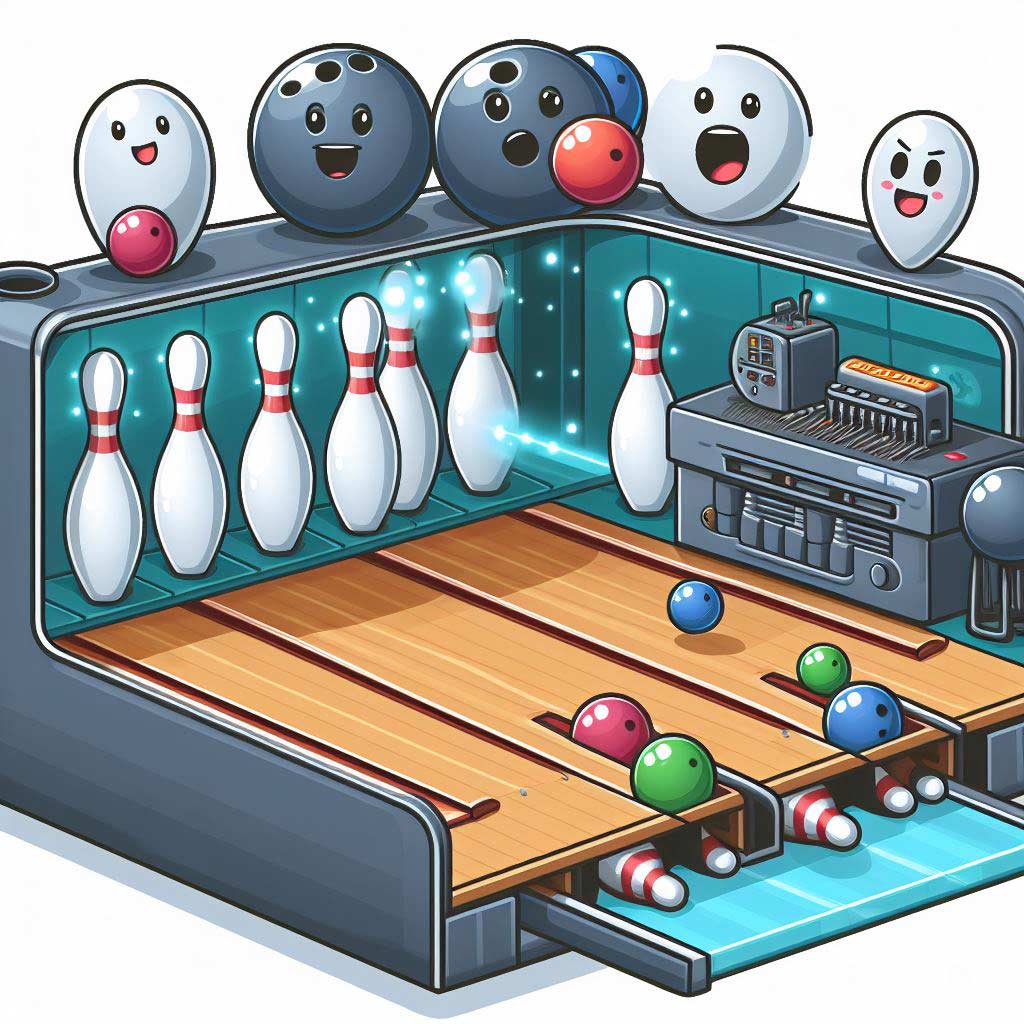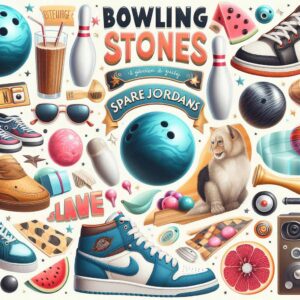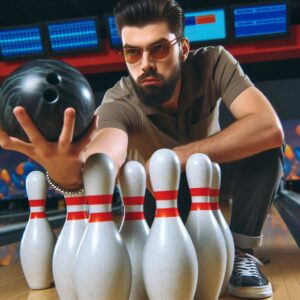Bowling is one of the most popular sports in the world, with over 90 million people participating globally each year. As a sport that has been around for centuries, bowling has a rich history and terminology that many recreational players are unaware of.
The intricacies of a regulation bowling lane contain far more complexity than meets the eye. Beyond the bowler, ball, and pins, there are finely tuned elements engineered for balancing factors like lane oil patterns, ball motion, pin action, and more.
In this comprehensive guide, we’ll explore the various components that make up a standard bowling lane and explain the purpose of each section. Understanding the anatomy and design of the lane surface can give bowlers valuable insight into maximizing their shots.
So whether you’re a seasoned league bowler or just head to the alley for occasional fun with friends, you’ll learn something new about what happens beneath your feet when rolling strikes and spares. Let’s get started!
Approach Area
The approach area is the physical space where a bowler starts their delivery before releasing the ball down the lane. This section is critically important for setting up the starting position, steps, and timing of the overall approach.
The length of the approach area extends 15 feet from the foul line back towards the bowler. Regulation lanes have approach areas made from synthetic materials like polyurethane, allowing bowling shoes to slide smoothly and transfer momentum into the forward motion of the ball release.
A bowler must find consistency in their starting position and steps in the approach area. Variations here can greatly impact your balance, timing, and accuracy delivering the ball onto the lane surface.
Experienced bowlers recommend standing at the same spot and taking the same number of steps each time. It takes repetition to master an approach, so establish your starting place and measure out steps to find what works best.
Taking practice shots without a ball allows bowlers to ingrain the kinesthetics of their approach. Coaches also recommend filming yourself to analyze inconsistencies in form. Keep your steps straight, fluid, and on-target to set up success from the get-go.
Lane Surface
The lane surface makes up the rectangular wooden or synthetic playing field bowlers roll their balls down towards the pins. Regulation lanes are 60 feet in length from the foul line to the headpin.
The width of a standard lane is 42 inches, allowing just enough room for the ball to pass through without squeeze room. Interestingly, the lane width has decreased over history, as bowling technology improved and higher scores needed taming.
The lane surface is made of a hardwood base of maple, pine, or similar wood types. To provide protection and consistency, the wood is layered with coating materials like plastic laminate or wood veneers.
Synthetic lane surfaces are also popular today, made of materials like plastic and fiberglass. Durability and ease of maintenance make these practical choices for heavily used bowling centers.
Of course, the most important feature on any bowling lane surface is the lane oil pattern. This oil is applied to the first 2/3rds of the lane in specific patterns to protect the wood and guide the ball’s trajectory.
Modern lanes have around 40 different oil pattern settings that technicians can program. Understanding oil patterns and how to adjust your throw is integral for bowlers wanting to improve their games.
The three main sections of lane oil patterns are the front, mid, and backend:
Front End
The first 20 feet of lane closest to the foul line. This section is the least oily, allowing bowlers to start hooks throwing straight shots. Spare shooting happens on the front end.
Mid Lane
The slightly longer, moderately oiled middle area. As the ball encounters more oil here, the skid phase ends and the hook emerges.
Backend
The final and most heavily oiled portion. The ball slows down significantly, curves sharply and drives into the pins. This backend hook is the strike pocket bowlers aim for.
Reading lane conditions and making ball adjustments is a learned skill for bowling well on different oil patterns. Whether dry, slick, sport or house shot – the keys are awareness and adaptability.
Gutter
The gutters provide an out-of-bounds zone on either edge of the lane surface to collect wayward balls and keep things running smoothly.
Gutters are recessed channels typically made of a synthetic material like plastic or coated wood. The channels run lengthwise along both sides of the lane surface.
Standard gutters are approximately 11 inches wide and drop around 7 inches below the level lane surface. This design collects balls efficiently while minimizing interference with balls traveling down the center.
Some recreational bowling lanes have bumpers installed over the gutters to prevent gutter balls. This keeps things fun and moving for casual players, especially children.
For serious league and tournament play, gutters with no bumpers are the standard. Staying out of the gutters requires accuracy, finesse and control – essential bowling skills.
Setting your shot line close to the edge of the gutter can be advantageous on sport shots. The ball encounters less oil and friction, resulting in an earlier hook toward the pocket. This tactic requires precision, however.
Pin Deck
The pin deck refers to the zone at the very end of the lane where the triangular rack of bowling pins is set up. This section receives constant impacts from speeding balls, so the construction needs to withstand high force.
The dimension of the pin deck extends past the end of the actual lane surface, although the exact distance can vary. Typical pin decks are around 16 feet long from the end of the lane to the back wall of the pit area.
The base of the pin deck is made from dense hardwood-like maple mounted on cross-supports. The top layers consist of laminate materials like plastic, fiberglass, or coated wood to provide durability.
Impact absorption is also important – cushion rubber pads or synthetic foams under the laminate help protect the pin deck.
At the rear of the pin deck is the pinsetter pit, an open space that houses the complex pinsetter machine. The pit allows clearance below the deck for the pinsetter to operate and reset pins after each throw.
Good pin action requires an adequately long and well-constructed pin deck. Bowlers should ensure any sign of loose or worn decking gets promptly fixed by bowling center maintenance staff.
Foul Line
The foul line marks the starting point of the actual lane surface, providing a clear transition between the approach area and the playing field.
This important line is one bowler must not cross with any part of their body during the delivery of the ball. Doing so results in a foul, nullifying the shot.
Traditionally, foul lines took the form of a shallow groove carved widthwise across the start of the lane, filled with putty or a dark material like mahogany for visual contrast.
On modern bowling lanes, foul lines are often embedded sensors made of metal or fiber-optic material. These automated foul detectors make calls more accurate and consistent.
For amateur play without sensors, the foul line is simply a bright solid line about 1 inch wide. Non-marking tape is ideal for temporary foul lines on unofficial surfaces.
Lane markings should align precisely from lane to lane – accuracy here is critical. Crossing over onto adjacent lanes can ruin shots for other bowlers nearby.
Hitting your target at release will steer the ball straight down your chosen line. But during delivery, be cautious not to let hips, feet or other body parts drift past the foul line.
Capping
The capping refers to adjustable gutter covers on each edge of the lane that can shift toward the center to guide errant balls back into the playing lane.
Capping helps prevent balls from being permanently lodged or damaged in the gutter. Centreing the ball also reduces pinfall malfunctions from off-line hits.
Manually operated capping boards traditionally required staff to frequently adjust by hand after off-center shots. This slowed down play significantly.
Now, automated capping technology uses sensors to monitor ball proximity to the gutters. Motorized capping modules automatically shift after off-target throws, centering the next ball quickly without human input.
For recreational bowling, manual bumpers placed over the gutters serve a similar purpose to capping. The difference is bumpers rebound balls entirely rather than just re-centering towards the pins.
Advanced players may dislike lanes with frequent capping adjustments or bumpers, as it takes some unpredictability out of errant shots. However, the automation helps keep the flow of play steady for most bowlers.
Pinsetter Machine
The complex mechanical system hidden beneath every bowling lane is the ingenious pinsetter machine. Without this technology, the sport of bowling could never have scaled up to modern-day popularity.
The pinsetter resides in the back pit of the lane, emerging after each bowl to rapidly clear fallen pins and precisely reset a new rack for the next shot. This robot-like efficiency enables bowling to be both competitive and fun.
While pinsetter brands like Brunswick and AMF have their own variations, the basics of form and function remain similar across machines.
When pins are knocked down by the ball, a sweeper arm glides out to brush the fallen pins off the lane and into the pit. The remaining pins are held in place by pneumatic grippers on a rotating circular plate.
In the pit, cleared pins to ride up conveyors while grippers
Frequently Asked Questions
What is the end of a bowling lane called?
The end of a bowling lane is called the pin deck. This is the zone where the pins are set up.
What are the dots on a bowling lane called?
The dots marking the approach area on a bowling lane are called approach dots. They help bowlers set up in the right starting position.
What is the area of the bowling lane where the pins are set up called?
The pin deck is the area at the end of the lane where the rack of bowling pins is set up. It extends past the end of the actual lane surface.
What are the bumpers on the side of bowling lane?
The bumpers on each side of a bowling lane are called gutter bumpers. They sit over the gutters to prevent gutter balls.
What does F mean in bowling?
In bowling scoring, F stands for Foul. It indicates that the bowler stepped over the foul line during their throw.
What are strikes in a row called?
In bowling, successive strikes are called a turkey (3 strikes in a row), four-bagger (4 strikes in a row) or five-bagger (5 strikes in a row). More than 5 is called a mega.
What is the front pin in bowling called?
The front pin in bowling is called the head pin. It’s the one in the center of the triangular pin setup.
What is Rule 31 in bowling?
Rule 31 says that a bowler must begin their approach with the same foot each time. Switching leads during a game is not allowed.
What is a bowling pin called?
The individual pins in bowling are simply called bowling pins. They are also known as skittles or kegels. Ten pins are set up in each frame.





